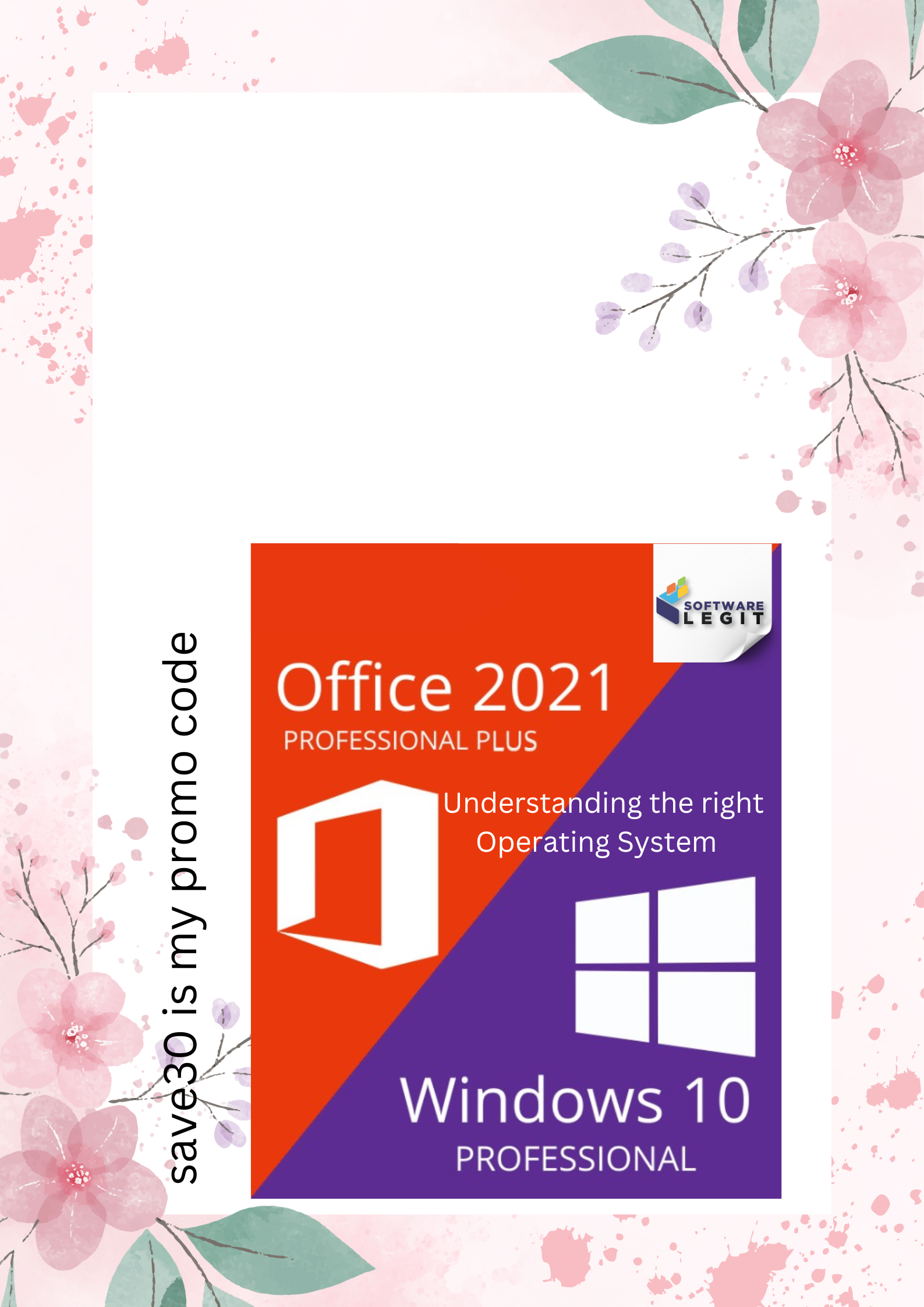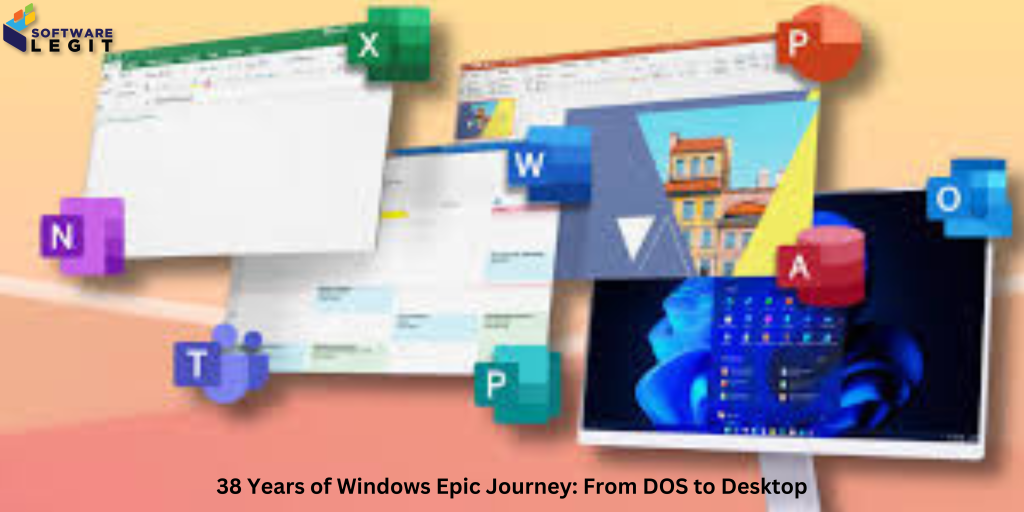From DOS to Desktop: Windows’ Success Story in 2024

Introduction
From DOS to Desktop: Windows’ Success Story an operating system synonymous with personal computing, has undergone a transformative evolution since its inception in 1985. This article embarks on a comprehensive exploration of Windows’ epic journey, delving into each major version to understand its impact on the digital landscape. From the humble beginnings of Windows 1.0 to the modern sophistication of Windows 11, this retrospective examines the challenges, triumphs, and innovations that have shaped the operating system we know today.

find your best software from softwarelegit
From DOS to Desktop: Windows’ Success Story
Windows 1.0 (1985): The Dawn of a New Era
- Overview: Windows 1.0 marked a pivotal moment in computing history as the first graphical user interface (GUI) for MS-DOS. While rudimentary by today’s standards, it introduced concepts like windows, icons, and menus, laying the groundwork for future developments.
- Review: Despite its limitations, Windows 1.0 represented a significant leap forward, offering a glimpse into the potential of graphical computing. However, its performance and usability were hindered by the underlying DOS architecture.
Windows 2.x (1987): Building on the Foundation
- Overview: Building upon the foundation of Windows 1.0, Windows 2.x introduced overlapping windows, enhanced memory management, and improved support for third-party applications. These refinements aimed to enhance the user experience and expand the operating system’s capabilities.
- Review: While Windows 2.x showcased progress, it still faced challenges in terms of performance and stability. Its impact remained limited as it struggled to compete with DOS-based applications.
Windows 3.x (1990-1992): A Breakthrough
- Overview: Windows 3.x emerged as a game-changer, offering a more polished interface, improved multitasking, and better compatibility with existing applications. This version marked a significant step forward in terms of usability and performance.
- Review: The success of Windows 3.x solidified Microsoft’s position in the PC market and paved the way for future iterations. Its user-friendly interface and growing application support contributed to its widespread adoption.
Windows 95 (1995): Revolutionizing the PC
- Overview: Windows 95 represented a monumental leap forward, introducing the Start menu, taskbar, and plug-and-play capabilities. It shifted the focus towards ease of use and marked the beginning of the consumer-centric era for Windows.
- Review: Windows 95 was a resounding success, transforming the way people interacted with computers. Its intuitive interface and stability made it a popular choice for both home and business users.
Windows 98 (1998): Building on Success
- Overview: Windows 98 aimed to enhance the user experience with improved hardware support, internet integration, and multimedia capabilities. It built upon the foundation laid by Windows 95 while addressing some of its limitations.
- Review: While Windows 98 offered advancements, it also faced criticism for stability issues. Nevertheless, it remained a popular choice for home users due to its user-friendly interface and multimedia features.
38 Years of Windows Epic Journey: From DOS to Desktop
Windows ME (2000): A Consumer-Focused Update
- Overview: Windows ME was positioned as a consumer-oriented update to Windows 98, focusing on multimedia, home networking, and digital content creation. It aimed to provide a more streamlined and entertainment-centric experience.
- Review: Unfortunately, Windows ME suffered from performance and stability problems, leading to a negative reputation. It is often regarded as one of the least successful Windows versions.
Windows 2000 (2000): A Business-Centric Focus
- Overview: Targeted at the business market, Windows 2000 emphasized reliability, security, and scalability. It introduced Active Directory and support for larger networks, making it a suitable choice for enterprise environments.
- Review: Windows 2000 gained a reputation for stability and robustness, establishing itself as a reliable platform for businesses. Its focus on security and performance addressed the needs of corporate users.
Windows XP (2001): The Golden Age
- Overview: Windows XP combined the consumer-friendly interface of Windows 98 with the stability and reliability of Windows 2000. It offered a balanced approach, catering to both home and business users.
- Review: Windows XP achieved unprecedented success, becoming one of the most popular operating systems in history. Its user-friendly interface, performance, and long-term support contributed to its widespread adoption.
Windows Vista (2006): A Controversial Chapter
- Overview: Windows Vista introduced a visually appealing Aero interface, enhanced security features, and improved multimedia capabilities. However, it also faced criticism for performance issues and compatibility problems.
- Review: Windows Vista received mixed reviews, with some users appreciating its visual enhancements while others encountered performance bottlenecks. It struggled to gain widespread adoption due to these challenges.
Windows 7 (2009): A Return to Form
- Overview: Windows 7 addressed the shortcomings of Vista by refining the user interface, improving performance, and enhancing compatibility. It brought back the familiar Start menu and offered a more stable and reliable experience.
- Review: Windows 7 was met with widespread acclaim, becoming one of the most popular Windows versions. Its focus on stability, performance, and user-friendliness contributed to its success.
Windows 8 (2012): A Bold Departure
- Overview: Windows 8 introduced a touch-centric interface with the Start screen, replacing the traditional Start menu. It aimed to provide a unified experience across devices, including tablets and convertibles.
- Review: Windows 8 was met with mixed reactions, with many users finding the new interface confusing and disruptive. The removal of the Start menu caused significant backlash, leading to a decline in user satisfaction.
Windows 8.1 (2013): A Step in the Right Direction
- Overview: Windows 8.1 addressed some of the criticisms of Windows 8 by reintroducing the Start button and making other usability improvements. It aimed to bridge the gap between the traditional desktop and the touch-centric interface.
- Review: While Windows 8.1 was an improvement over its predecessor, it still faced challenges in gaining widespread acceptance. The lingering effects of Windows 8’s controversial design hindered its adoption.
Windows 10 (2015): The Future of Windows
- Overview: Windows 10 marked a significant departure from previous versions, introducing a unified platform across devices, including PCs, tablets, and smartphones. It brought back the Start menu, refined the interface, and emphasized cloud integration.
- Review: Windows 10 has been well-received for its stability, performance, and regular updates. The emphasis on compatibility and feature updates has contributed to its success, making it a popular choice for both consumers and businesses.
Windows 11 (2021): A New Era
- Overview: Windows 11 represents a significant redesign of the Windows interface, with a new Start menu, centered taskbar, and rounded corners. It aims to provide a more modern and intuitive user experience.
- Review: While still relatively new, Windows 11 has generated both excitement and criticism. Its visual overhaul and performance improvements have been praised, but some users have expressed concerns about compatibility and feature changes.
Conclusion
Windows’ epic journey has been marked by innovation, challenges, and adaptation. From its humble beginnings as a graphical interface for MS-DOS to the modern, feature-rich operating system of today, Windows has evolved to meet the changing needs of users. While each version has contributed to the overall development of the platform, some iterations have been more successful than others. As technology continues to advance, Windows will undoubtedly undergo further transformations, shaping the future of personal computing.
